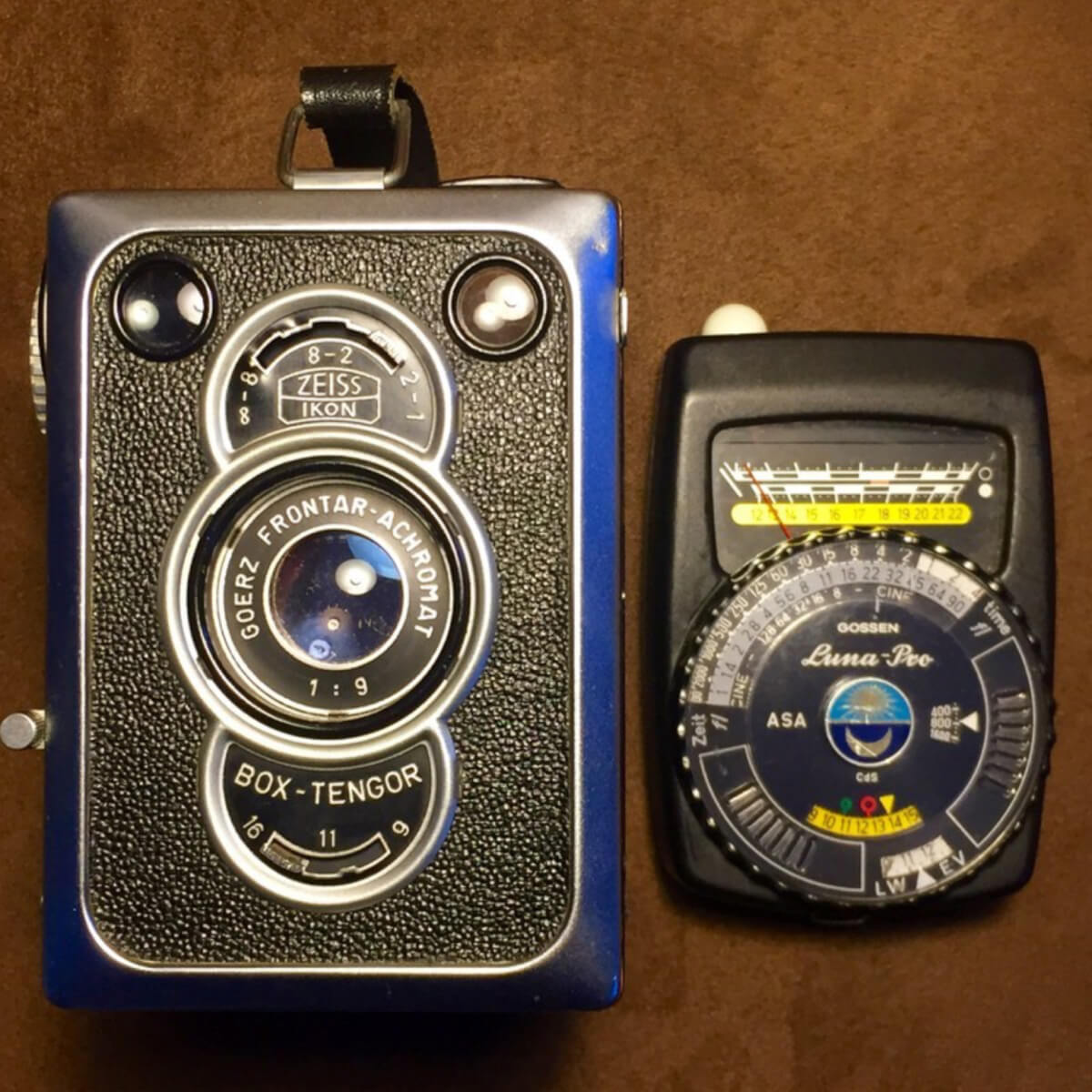This is probably old news to most folks, but I thought I would pop a quick notebook entry up for posterity. I’ve published a review of the lovely Zeiss Ikon Box Tengor on Twin Lens Reflux (now on here on EMULSIVE), and in that article mentioned that it was made for Pan F and other slow films of its era. We all shoot in less than ideal conditions, and being able to make the most of dim conditions is convenient. Especially when your brightest aperture is an austere F/9.0.

Zeiss Ikon Box Tengor 56:2 and Gossen Luna Pro
In an effort to give the Zeiss more love in 2016, I got it out of storage and reacquainted myself with the feature set. After being gifted an excellent classic meter through EMULSIVE’s 2015 Secret Santa gift exchange this past holiday season, I’ve changed my outlook on shooting with the Box. I will try changing the film sensitivity to meet the conditions, not only relegating the Zeiss to bright sunshiny days.
The Gossen CDS meter is a simple design that puts all possible combinations of aperture and shutter speed on a chapter ring according to the ISO selected. By reversing the process and setting ISO last it is easy to compensate after the roll is complete with the appropriate push or pull during processing.

Gossen Luna Pro
The Zeiss has three possible apertures and a single shutter speed. By measuring the light first and working off your shutter speed, one can determine the ISO. Other simple cameras could present even less bother if they only have a single aperture to choose from. Here’s how I’ll be using the Gossen Luna-Pro with the Zeiss:
- Determine my desired aperture for depth of field and set. (Optional, I have a choice, you may not)
- Measure the light and record the number on the computer dial below.
- Rotate the inner disc, adjusting the desired aperture to coincide with the 1/30 time on the speed ring.
- Check the ASA/ISO window for the required sensitivity
- Push/pull during processing as necessary.
As you can see here, the meter sees the available light as 13 (indoors, north window light) on the upper display. I move the chapter ring so that the 1/30 lines up with the F/9 mark. This has me shooting at 1/30 and F/9, processing the film at 800ISO for correct exposure. (For F/11, I’d need to push to 1600 and for F16 the push is to 3200).
~ Matt
Note: This article originally appeared on Matthew Thompson’s Twin Lens Reflux blog and has been recreated here as part of a digital archive of that website.







